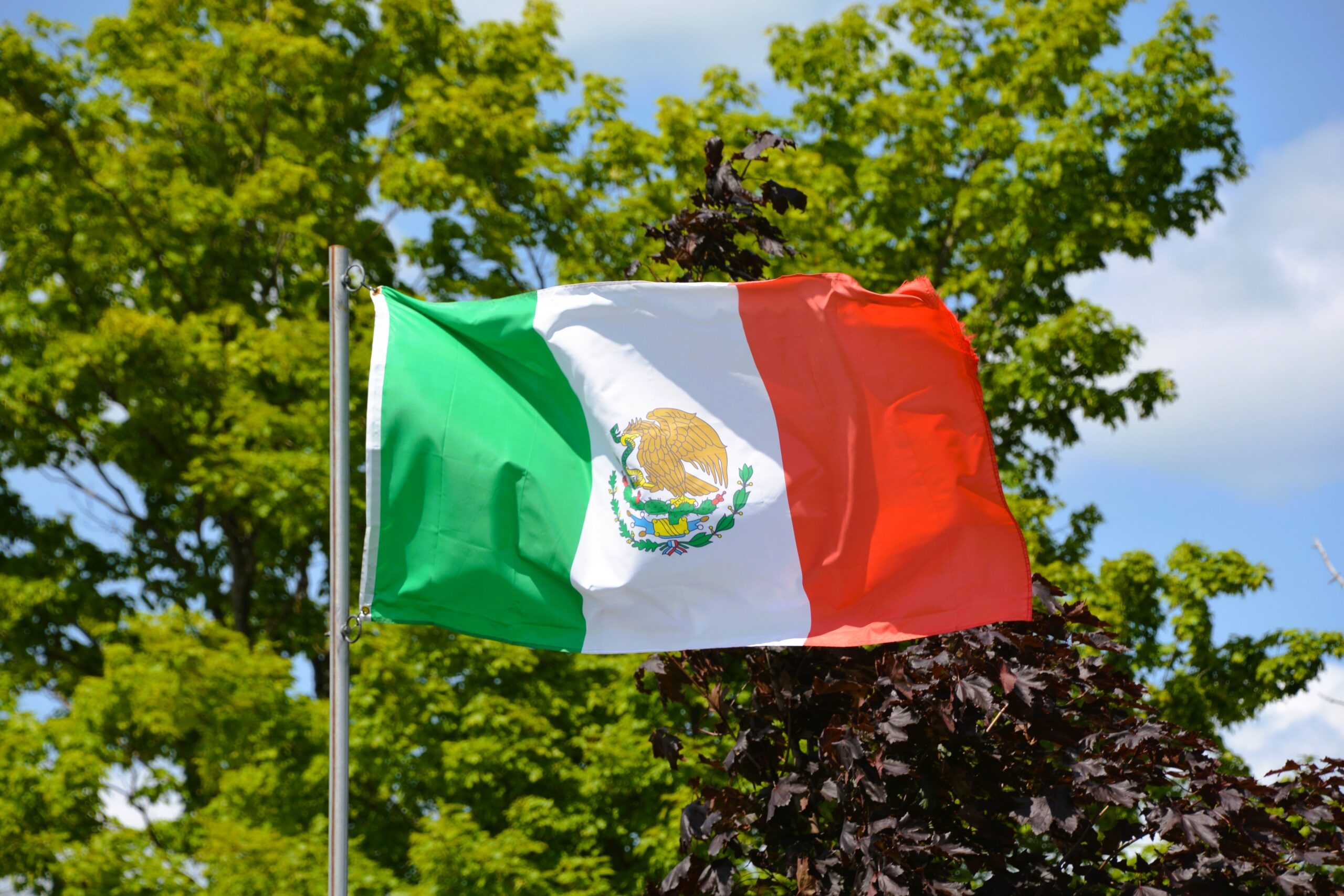Flags are more than just colorful pieces of fabric; they are symbols of history, culture, and identity. Some flags have stood the test of time, representing nations and their stories for centuries. From ancient banners that inspired warriors in battle to modern designs that reflect unity and independence, these flags carry deep significance. Their enduring presence connects past generations to the present, offering a glimpse into the values and traditions of the countries they represent. Exploring the world’s oldest flags reveals not only their fascinating origins but also the legacy they continue to uphold today.
Denmark – The Dannebrog

The Dannebrog is widely recognized as the oldest continuously used national flag, originating in the early 13th century. Officially adopted in 1219, its design features a simple white Scandinavian cross on a red background, symbolizing Christianity. According to legend, the flag fell from the heavens during the Battle of Lyndanisse, inspiring Danish troops to victory. While the exact truth of this origin remains debated, the Dannebrog’s enduring design has become a timeless representation of Denmark’s history and culture. Over centuries, it has been a unifying symbol for Danes during wars, celebrations, and royal events. The flag’s influence has extended beyond Denmark, inspiring the design of other Nordic countries’ flags. Today, it continues to wave as a proud emblem of the world’s oldest monarchy.
Austria – The Bindenschild

Austria’s flag, the Bindenschild, has roots tracing back to 1230, making it one of the oldest national banners. Its iconic red-white-red horizontal stripes are said to represent the blood-stained white garment of Duke Leopold V after a fierce battle. The design is steeped in medieval European heraldry, reflecting Austria’s significant role in the Holy Roman Empire. Officially adopted in 1230, the flag has survived numerous historical upheavals, from the Habsburg dynasty to modern-day Austria. Despite wars and changing political systems, the flag’s design has remained remarkably consistent. Its simplicity contrasts with its profound historical depth, capturing Austria’s resilience and cultural identity. This ancient symbol is still used today as a proud representation of the Austrian nation.
Switzerland – The Swiss Cross

Switzerland’s flag, with its bold white cross on a red square, dates back to the 13th century. The design emerged during the Battle of Laupen in 1339 when Swiss soldiers used the cross as a symbol of unity and faith. Unlike most flags, its square shape sets it apart, adding to its unique identity. The flag officially became Switzerland’s emblem in 1848, though its historical roots are much older. Its association with neutrality and peace aligns perfectly with Switzerland’s global image today. Over time, the Swiss Cross has transcended its military origins to symbolize humanitarian efforts and national pride. It remains a potent and recognizable icon around the world.
Scotland – The Saltire

Scotland’s Saltire, also known as the St. Andrew’s Cross, is one of the oldest flags in the world, dating back to at least 832 AD. Its distinctive white diagonal cross on a blue field commemorates Saint Andrew, Scotland’s patron saint. Legend states that the flag appeared in the sky before a battle, inspiring the Scots to victory. The design has been officially associated with Scotland since the late 14th century, solidifying its place in history. This ancient banner continues to serve as a key symbol of Scottish identity and pride. Its simplicity belies the deep cultural and historical significance it holds for the Scottish people. Even today, the Saltire unites Scots across the globe as a representation of their heritage.
England – St. George’s Cross

The St. George’s Cross, a simple red cross on a white background, is England’s historic flag, first associated with the country in the 13th century. Adopted as the national emblem in 1190, it was originally used during the Crusades. Saint George, the patron saint of England, inspired its design, representing courage and faith. The flag has been an enduring symbol of England’s identity through wars, religious conflicts, and national celebrations. Its design also serves as the foundation for the Union Jack, incorporating elements of other British flags. Despite its ancient origins, the St. George’s Cross remains an integral part of England’s identity. It is a striking reminder of the country’s medieval past and enduring cultural legacy.
Wales – Y Ddraig Goch

The Welsh flag, featuring a red dragon on a green and white field, has origins dating back to the 9th century. Known as Y Ddraig Goch, the dragon symbolizes strength and resilience, rooted in Celtic mythology. Although the design wasn’t officially adopted until 1959, its elements are much older, linked to King Cadwaladr of Gwynedd. The green and white colors were later added, representing the Tudor dynasty’s Welsh heritage. This unique flag sets Wales apart from other nations with its mythical creature centerpiece. It continues to evoke pride among the Welsh people, celebrating their distinct identity and rich history. The flag serves as a testament to Wales’ enduring spirit and deep cultural roots.
France – The Tricolore

France’s iconic Tricolore of blue, white, and red emerged during the French Revolution in 1789 but has roots in older French banners. The colors symbolize liberty, equality, and fraternity, the founding principles of modern France. Historically, the white represented the monarchy, while blue and red were associated with Paris. It replaced royal banners and became an enduring emblem of the republic, unifying the nation. Despite its relatively recent adoption in 1794, the flag reflects centuries of French history and revolution. Its influence extends globally, inspiring countless other national flags. Today, the Tricolore is a powerful representation of French identity and ideals.
Portugal – The Portuguese Flag

Portugal’s flag features a unique design with a green and red background and a shield at its center, dating back to 1143. Its colors symbolize hope and the blood of those who fought for independence, while the shield represents historical victories. The flag was officially adopted in 1911 following the establishment of the Portuguese Republic. However, its elements, including the armillary sphere, trace back to Portugal’s Age of Exploration. Over centuries, it has reflected Portugal’s maritime legacy and enduring sovereignty. The flag embodies the country’s pioneering spirit and cultural richness. It continues to inspire pride and unity among the Portuguese people worldwide.
Japan – The Nisshōki

The Nisshōki, or Hinomaru, Japan’s national flag, has been in use since at least the 12th century. Featuring a simple red circle on a white field, it represents the sun, a symbol deeply tied to Japanese culture and spirituality. The design aligns with Japan’s name, meaning “Land of the Rising Sun,” and reflects its Shinto traditions. It was officially adopted in 1870, but its roots go back to samurai banners and earlier periods. Over the centuries, the Hinomaru has represented both Japan’s imperial past and its modern national identity. Its minimalist elegance is matched by its profound cultural significance. Today, the flag is a unifying symbol for Japan, embodying its history, traditions, and aspirations.
China – The Five-Star Red Flag

China’s Five-Star Red Flag, officially adopted in 1949, incorporates symbols that are rooted in ancient Chinese culture. The red background signifies revolution and the sacrifices of the people, while the five stars represent unity under the Communist Party. Although its official adoption is recent, red flags have been prominent in Chinese banners and emblems for thousands of years. The design reflects a blend of modern ideology and traditional aesthetics. Its simplicity ensures recognizability while carrying profound symbolic weight. Today, the flag flies proudly over China, signifying its transformation and enduring heritage. Its rich symbolism connects the present to the country’s historical legacy.
Norway – The Nordic Cross Flag

Norway’s flag, with its red background, blue cross, and white borders, dates back to 1821 but is influenced by the ancient Dannebrog. The cross symbolizes Christianity, while the red, white, and blue represent liberty, equality, and fraternity—values Norway adopted after independence from Denmark. Though officially adopted in the 19th century, Norway’s use of cross designs dates to the medieval period. Its striking simplicity reflects the rugged yet beautiful Scandinavian landscapes. The flag is a proud emblem of Norwegian independence and unity. Today, it is widely recognized and celebrated during national holidays and global events. It remains a testament to Norway’s rich cultural and political history.
Greece – The Blue and White Cross

Greece’s national flag, featuring blue and white stripes and a cross, was officially adopted in 1822 during its struggle for independence from the Ottoman Empire. The colors symbolize the sea and sky, as well as purity and freedom. Its cross pays homage to the country’s deep Christian roots. The flag’s nine stripes are said to represent the syllables of the phrase “Freedom or Death,” a motto from the Greek Revolution. While its modern design is relatively recent, it incorporates elements from ancient Greek symbols. The flag continues to evoke pride in Greece’s rich history and cultural legacy. Today, it stands as a beacon of independence, resilience, and heritage.
Spain – The Spanish Flag

Spain’s flag, with its red and yellow stripes and intricate coat of arms, was officially adopted in 1785 but incorporates designs from medieval Spanish kingdoms. The red and yellow are inspired by the colors of the Spanish Crown and symbolize valor and generosity. Its coat of arms reflects Spain’s unity and its colonial past, including representations of Castile, León, Aragon, and Navarre. The flag’s design has evolved over centuries, incorporating elements from earlier banners used during Spain’s Reconquista. Today, it serves as a national emblem of pride and cultural diversity. The flag is deeply tied to Spain’s identity and global influence. Its vibrant colors make it instantly recognizable around the world.
Turkey – The Crescent and Star Flag

Turkey’s flag, featuring a red field with a white crescent and star, has origins dating back to the Ottoman Empire in the late 18th century. Its design is deeply rooted in Islamic traditions, where the crescent and star symbolize faith and guidance. The red color signifies the sacrifices made by Turkish people during wars and revolutions. Although the modern flag was officially adopted in 1936, similar designs were used by Ottoman rulers for centuries. Its iconic imagery reflects both Turkey’s historical and modern identity. The flag is a unifying symbol of the Turkish Republic and its cultural heritage. Its simplicity and elegance make it one of the most recognizable flags in the world.
Ethiopia – The Ethiopian Flag

Ethiopia’s flag, with its green, yellow, and red tricolors, dates back to the late 19th century. These colors, often referred to as the Pan-African colors, symbolize land, hope, and sacrifice. Ethiopia, being one of the only African nations never colonized, has used its flag to inspire independence movements across the continent. Officially adopted in 1897, the flag has undergone slight modifications, with the addition of a star emblem in 1996. It remains a symbol of unity and pride for Ethiopia and its diaspora. The flag’s historic significance ties directly to Ethiopia’s role as a beacon of African independence. Today, it is a powerful emblem of freedom and resilience.
Sweden – The Swedish Flag

Sweden’s flag, a blue background with a golden cross, dates back to the early 16th century. The design is believed to be inspired by the Dannebrog and features colors derived from the Swedish coat of arms. Officially adopted in 1906, the flag’s Christian cross reflects the nation’s religious history. Its bright and simple design mirrors the vast skies and natural beauty of Sweden’s landscapes. The flag has remained largely unchanged for centuries, serving as a symbol of stability and tradition. Its distinct design is widely recognized as a representation of Scandinavian unity. Today, it flies proudly over a nation known for its rich cultural and historical heritage.
India – The Tricolor Flag

India’s national flag, adopted in 1947, carries a blend of ancient symbolism and modern ideals. The saffron, white, and green stripes represent courage, peace, and growth, respectively, while the Ashoka Chakra at the center signifies eternal progress. Though its current design is recent, its roots trace back to earlier independence movements in the early 20th century. The flag’s colors also reflect India’s diverse culture, religions, and unity. It was designed by Pingali Venkayya, whose work drew from India’s long history of banners and emblems. Today, it stands as a proud representation of the nation’s sovereignty and aspirations. The flag is deeply revered and is central to national celebrations.
Finland – The Finnish Cross

Finland’s flag, featuring a blue cross on a white field, was officially adopted in 1918 but is inspired by older Nordic designs. The blue represents Finland’s countless lakes and skies, while the white symbolizes snow-covered landscapes. Its design reflects the country’s Christian heritage, consistent with other Scandinavian nations. Though modern in adoption, the flag evokes the ancient traditions and natural beauty of Finland. It became a unifying symbol during Finland’s independence from Russia. The simplicity of its design belies its deep cultural and historical significance. Today, it continues to serve as a proud emblem of Finnish identity.
Mexico – The Mexican Tricolor

Mexico’s flag, with its green, white, and red vertical stripes and central eagle emblem, was first adopted in 1821. The green represents hope, the white stands for unity, and the red symbolizes the blood of those who fought for independence. At the center, the emblem depicts an eagle perched on a cactus, devouring a serpent—a symbol rooted in Aztec mythology. This iconic design reflects Mexico’s deep cultural and historical heritage. Although it has undergone slight modifications, its core symbolism has remained consistent for over two centuries. The flag is a unifying emblem for Mexicans both at home and abroad, representing resilience and pride. Its intricate design captures the spirit of Mexico’s ancient traditions and modern aspirations.
Germany – The Black, Red, and Gold Tricolor

Germany’s national flag, featuring horizontal stripes of black, red, and gold, has origins dating back to the early 19th century. The colors were first used during the Napoleonic Wars by the Lützow Free Corps, a volunteer force fighting for German unification. Officially adopted in 1919 during the Weimar Republic, the flag symbolizes freedom, democracy, and unity. Though temporarily replaced during the Nazi era, it was reinstated after World War II as a representation of the Federal Republic of Germany. The tricolor reflects Germany’s complex history and its ongoing commitment to democratic ideals. Its simplicity contrasts with the profound historical and cultural meaning it holds. Today, the flag serves as a powerful emblem of Germany’s unity and progress.
This article originally appeared on Rarest.org.
More From Rarest.Org
Throughout the world, certain animals have amazed scientists and nature lovers alike with their incredible lifespans, stretching hundreds or even thousands of years. These long-lived creatures reveal much about survival and adaptability. Read more.
Superyachts have become the ultimate symbol of luxury and power, designed with an extraordinary blend of opulence, advanced technology, and performance. Each of these vessels showcases meticulous craftsmanship from some of the world’s most renowned shipyards, like Lürssen, Oceanco, and Blohm + Voss. Read more.
Insects are some of nature’s most resilient and adaptable creatures, often packing surprising strength and unique abilities into their small bodies. From beetles that can lift hundreds of times their own weight to ants that work together in swarms to capture prey, each species has evolved to thrive in its environment in fascinating ways. Read more.



